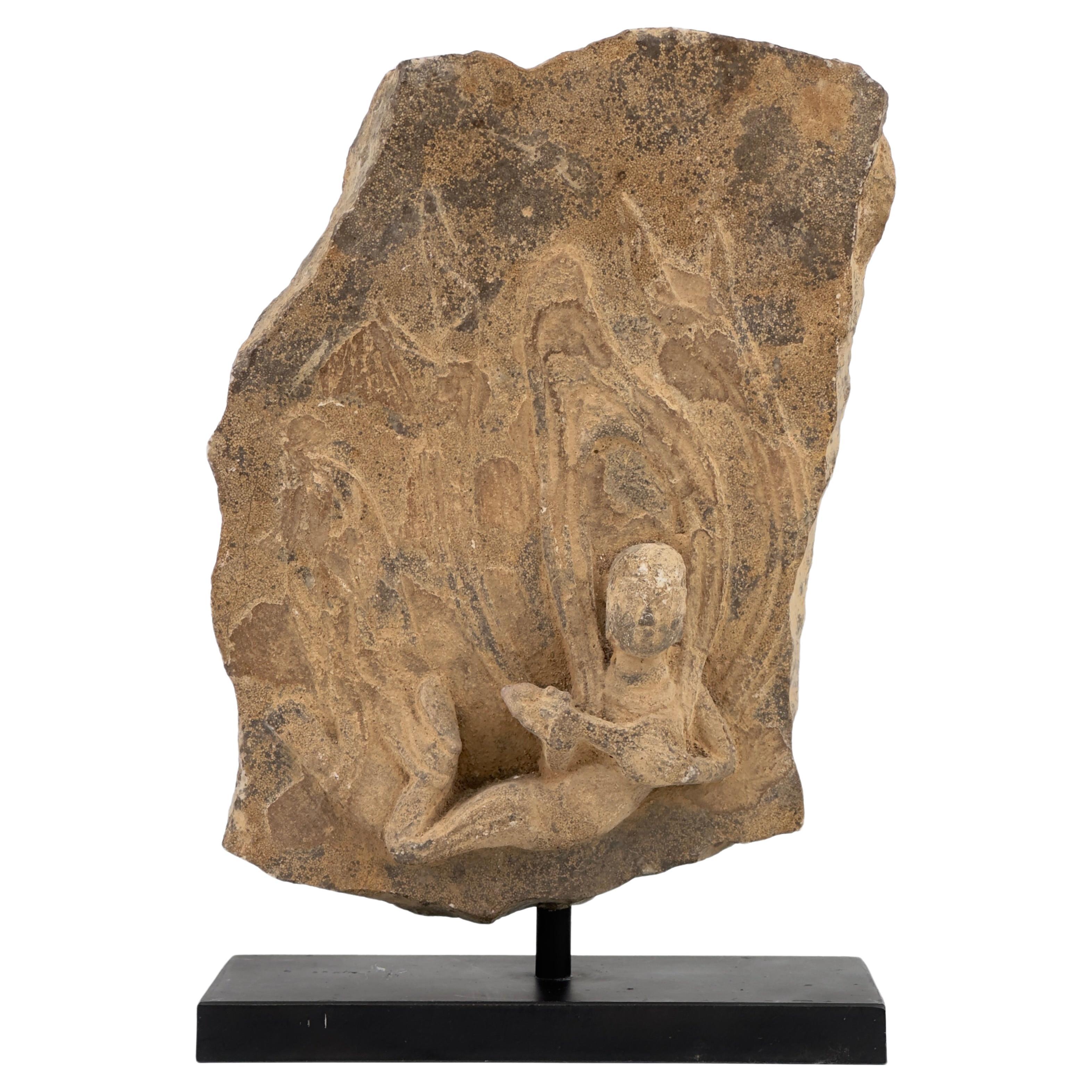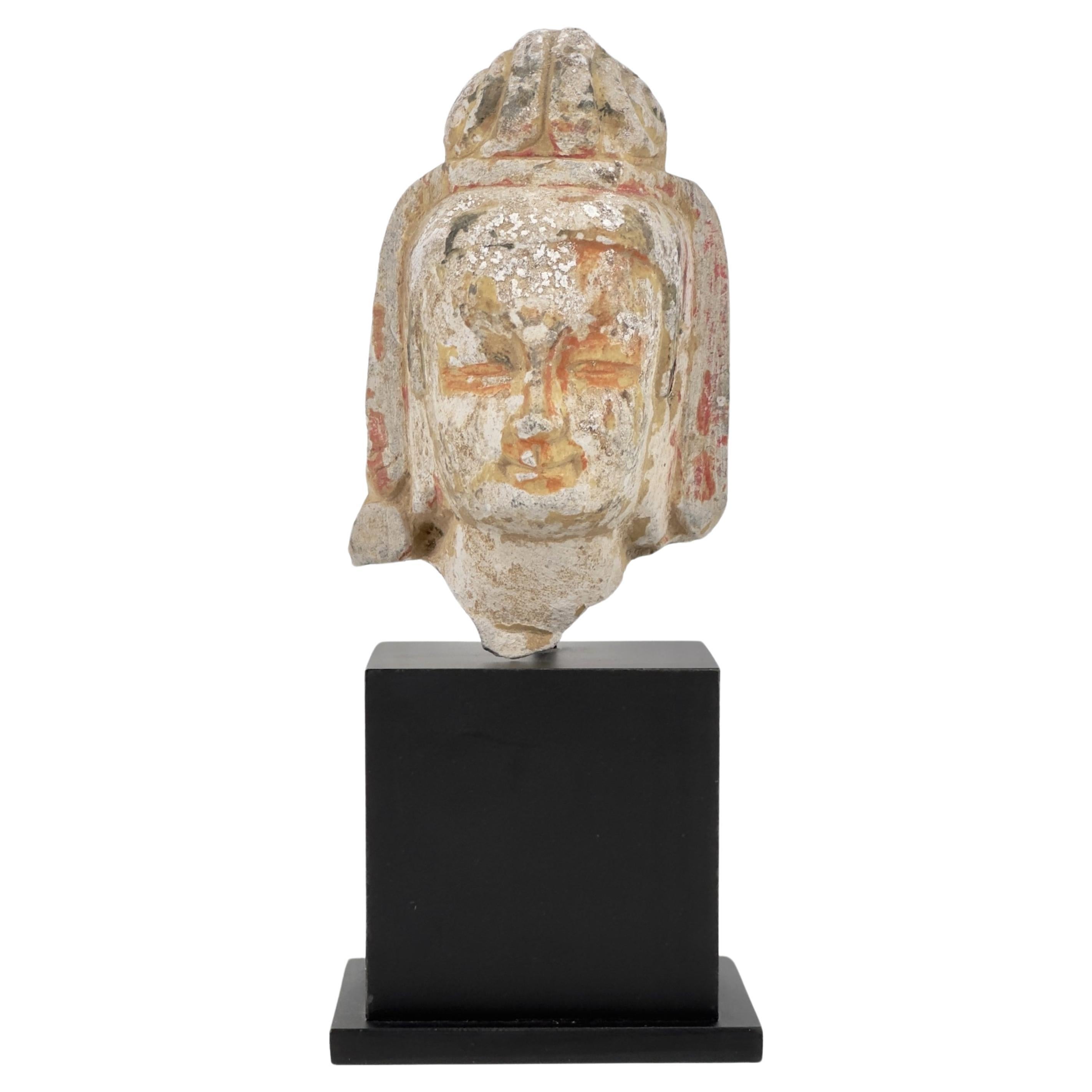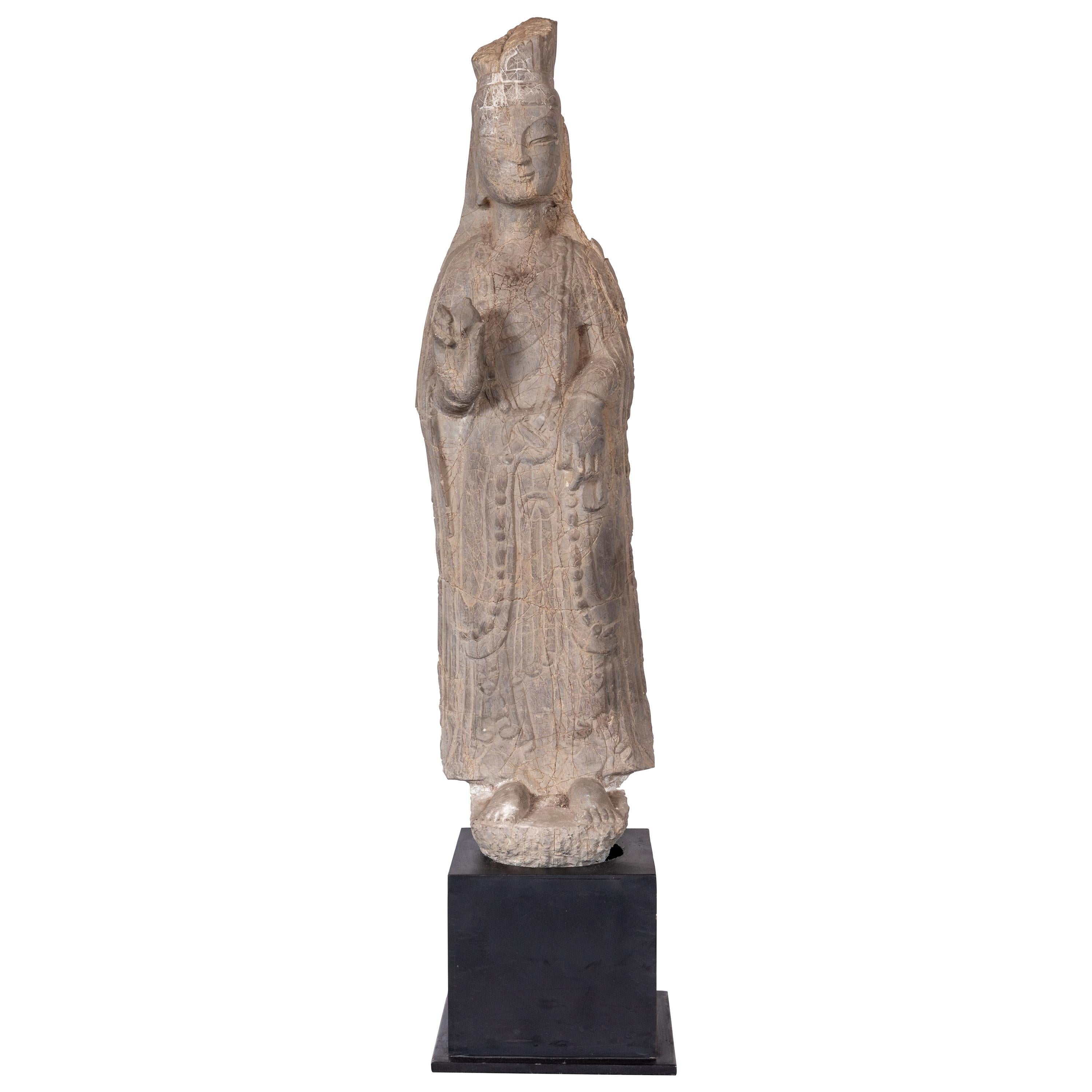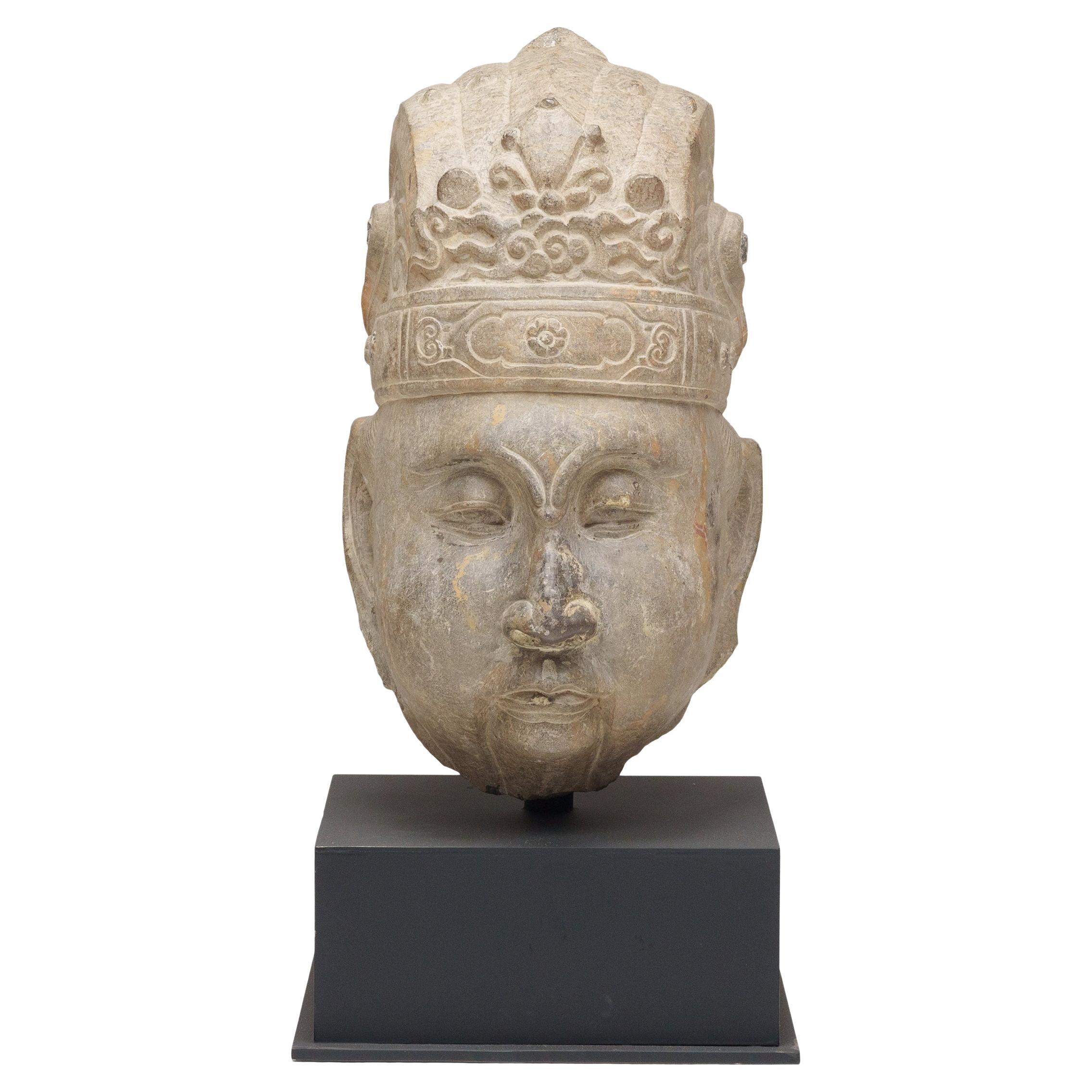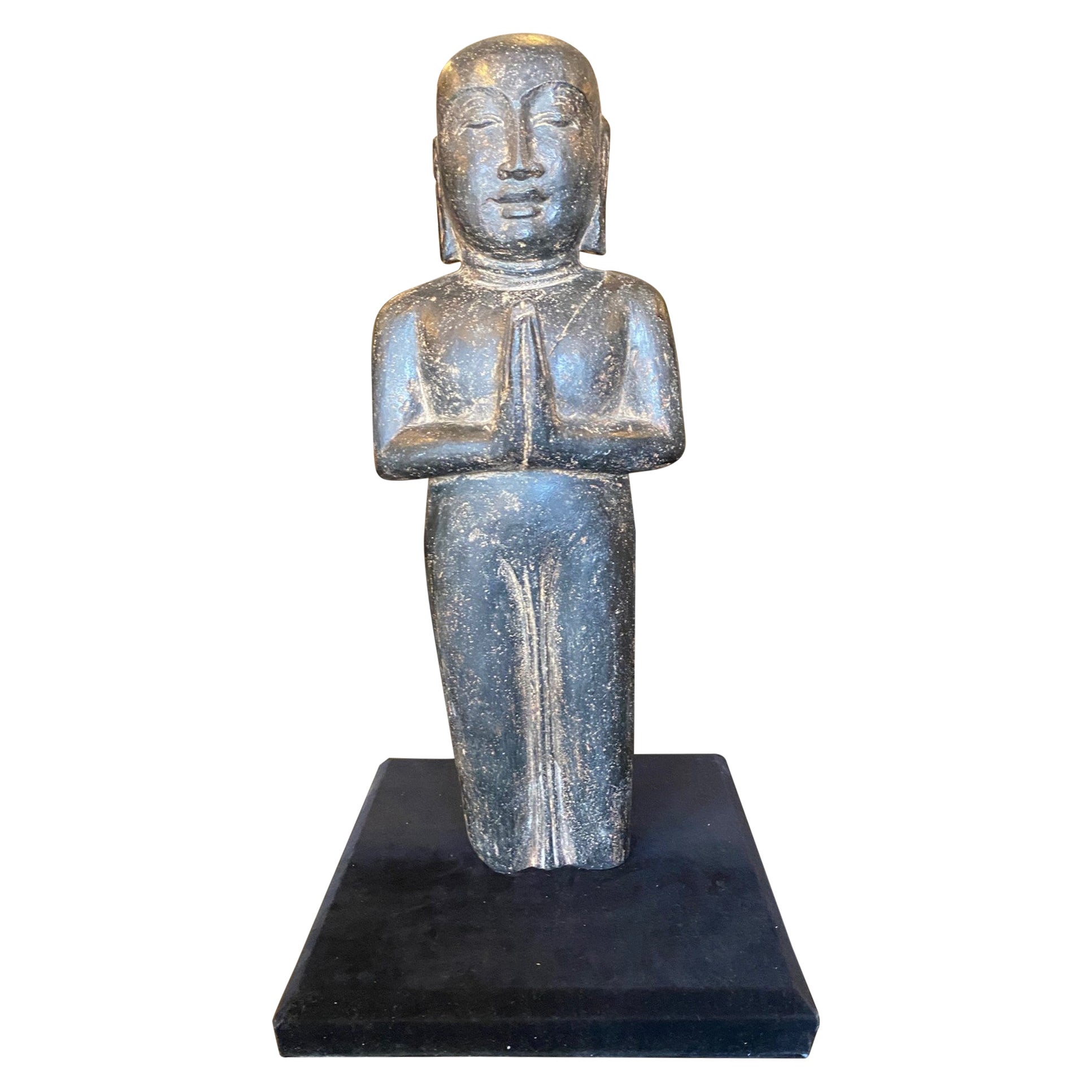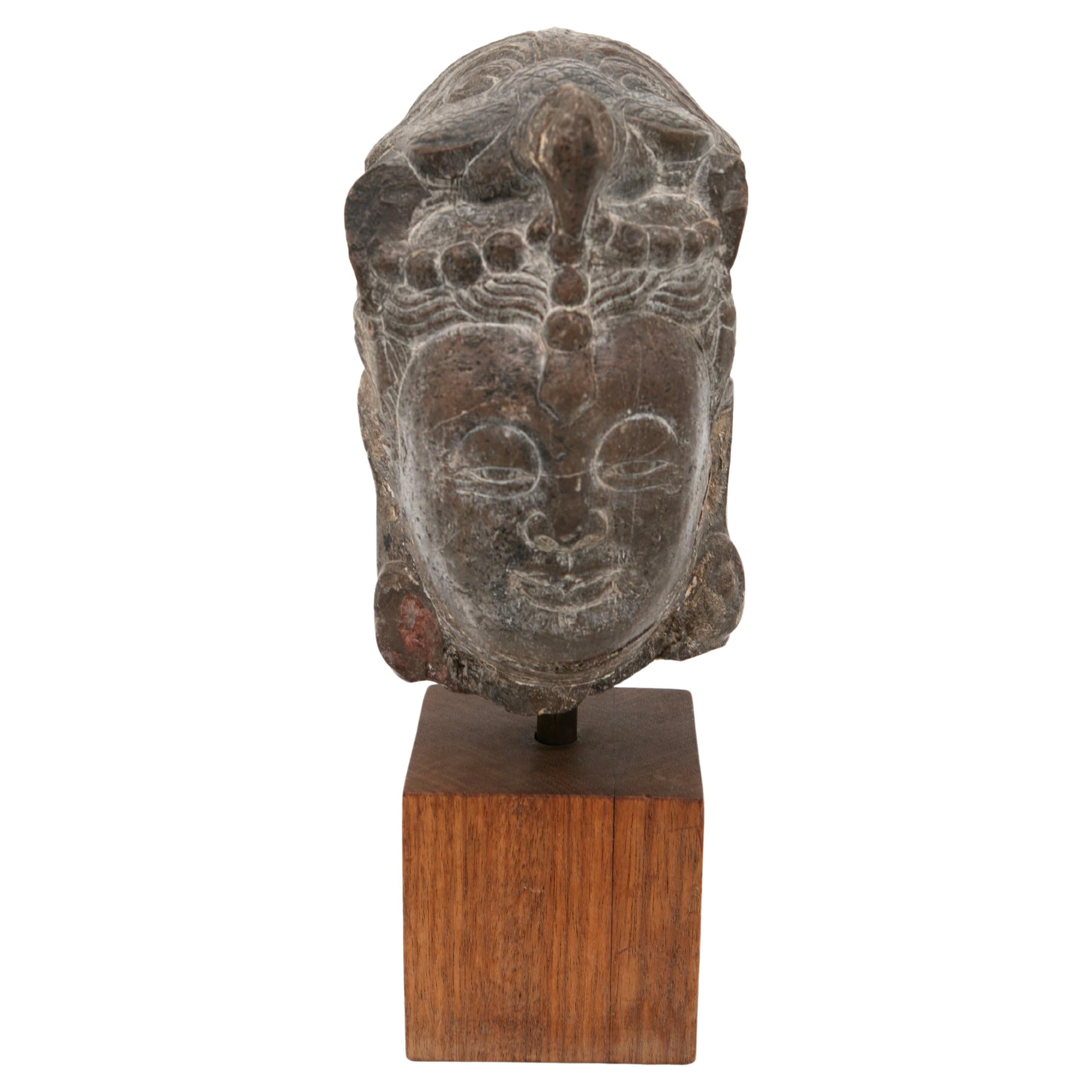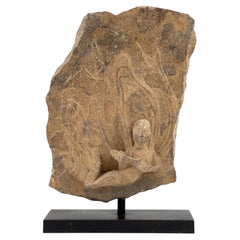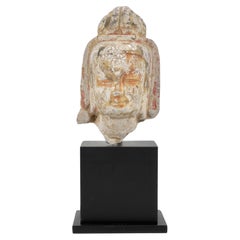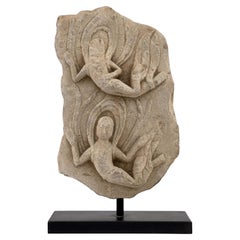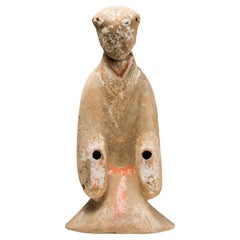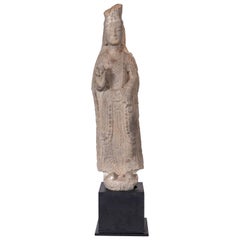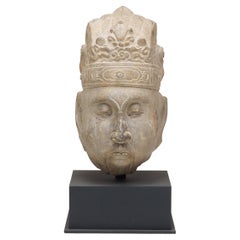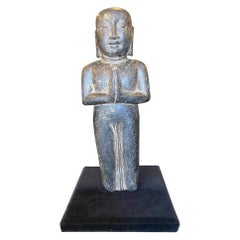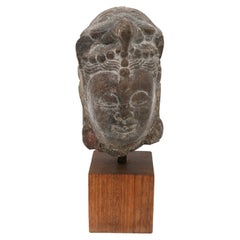Items Similar to Celestial being(Apsara) Stone Statue, Northern Wei-Tang Dynasty
Want more images or videos?
Request additional images or videos from the seller
1 of 14
Celestial being(Apsara) Stone Statue, Northern Wei-Tang Dynasty
$4,450
$8,90050% Off
£3,376.56
£6,753.1250% Off
€3,860.79
€7,721.5850% Off
CA$6,215.44
CA$12,430.8950% Off
A$6,910.73
A$13,821.4550% Off
CHF 3,608.40
CHF 7,216.8050% Off
MX$84,120.38
MX$168,240.7650% Off
NOK 46,041.62
NOK 92,083.2450% Off
SEK 43,138.80
SEK 86,277.5950% Off
DKK 28,813.80
DKK 57,627.6050% Off
Shipping
Retrieving quote...The 1stDibs Promise:
Authenticity Guarantee,
Money-Back Guarantee,
24-Hour Cancellation
About the Item
This statue appears to be a stone sculpture of an apsara, a celestial nymph from Buddhist and Hindu traditions. Despite its fragmentary state, the sculpture conveys grace and movement. The apsara is captured in a dynamic pose, perhaps once part of a larger tableau, playing a flute-like instrument. The facial features are serene yet expressive, with faint traces of pigmentation hinting at the sculpture's original polychromy. The black stand was made in Hong Kong at the time of the acquisition.
Date : Northern Wei-Tang Dynasty(5-8th century)
Dimension : 10.5cm (Height) x 8cm(Diameter)
Condition : Good
Provenance : Acquired in 1999, Hongkong
Reference : Bonhams London 11 Jun 2003 - Fine Asian Art - Lot 143
* Apsara
Apsaras, celestial beings gracing the skies of ancient lore, are often heralds of good fortune and the embodiment of positive energy. They float through the heavens with such grace and beauty that their presence is said to uplift the spirit and inspire joy in the hearts of those who witness them.
In many Asian cultures, Apsaras are regarded as benevolent spirits of water and clouds, thought to bring nourishing rains to sustain life and fertility to the earth. Their dances, celestial melodies, and elegant movements are believed to soothe the soul and bring harmony to the world.
Depicted with ethereal elegance, Apsaras are not merely dancers; they are muses of creativity and the arts. Artists, musicians, and poets seek inspiration from these divine figures, hoping to capture a fragment of their heavenly artistry.
In the presence of Apsaras, it's said that one's luck is sure to turn for the better, as they are symbols of good fortune. Their likeness adorns temples and palaces, not only as decoration but as a wish for prosperity, success, and the positive flow of energy.
Embracing the qualities of Apsaras in one's life can be seen as an aspiration to live in harmony with the beauty of nature, the arts, and the joyful melodies of existence. They remind us of the delight found in the natural world and encourage us to appreciate the everyday dance of life with a light heart and hopeful spirit.
- Dimensions:Height: 4.14 in (10.5 cm)Diameter: 3.15 in (8 cm)
- Style:Tang (Of the Period)
- Materials and Techniques:
- Place of Origin:
- Period:
- Date of Manufacture:5-8th century
- Condition:Minor losses. Minor fading.
- Seller Location:seoul, KR
- Reference Number:1stDibs: LU9577238987292
About the Seller
4.8
Gold Seller
Premium sellers maintaining a 4.3+ rating and 24-hour response times
Established in 1999
1stDibs seller since 2023
38 sales on 1stDibs
Typical response time: <1 hour
- ShippingRetrieving quote...Shipping from: seoul, Korea South
- Return Policy
Authenticity Guarantee
In the unlikely event there’s an issue with an item’s authenticity, contact us within 1 year for a full refund. DetailsMoney-Back Guarantee
If your item is not as described, is damaged in transit, or does not arrive, contact us within 7 days for a full refund. Details24-Hour Cancellation
You have a 24-hour grace period in which to reconsider your purchase, with no questions asked.Vetted Professional Sellers
Our world-class sellers must adhere to strict standards for service and quality, maintaining the integrity of our listings.Price-Match Guarantee
If you find that a seller listed the same item for a lower price elsewhere, we’ll match it.Trusted Global Delivery
Our best-in-class carrier network provides specialized shipping options worldwide, including custom delivery.More From This Seller
View AllApsara Carved Limestone Stele with Extremely Rare 'Oolitic silica', Wei Dynasty
Located in seoul, KR
The small dots apparent on the surface of this stone stele are indicative of an oolitic silica structure or oolites formed in what is known as "Oolitic chert." The same phenomenon can also be observed in the Tang Dynasty Limestone Stele at the Asian Art Museum in San Francisco. This formation occurs gradually over the course of thousands to several hundred thousand years within the soil or sea. Similar structures are commonly found in ancient fossils or arrowheads. Ancient peoples chose certain types of stones for tool-making, preferring materials that were easier to work with and could be sharpened effectively. This predilection is believed to be the reason why oolitic silica structures are frequently found in ancient arrowheads.
The development of these oolitic silica structures is a very slow process involving the accumulation of siliceous layers around particulates. This phenomenon, where silica reacts with water to form layers around a nucleus, occurs under specific chemical and physical conditions. Typically, it takes thousands to hundreds of thousands of years for silica to gradually accumulate in layers through contact with moisture, a process that requires a precise harmony of many variables, including chemical conditions, temperature, pressure, pH, and biological activity.
It is known that no other stele with such a silica structure has been identified to date, serving not only as evidence of its authenticity but also significantly enhancing the rarity of this piece.
This stele appears to be a stone sculpture of an apsara, a celestial nymph from Buddhist and Hindu traditions. Despite its fragmentary state, the sculpture conveys grace and movement. The apsara is captured in a dynamic pose, perhaps once part of a larger tableau, playing a flute-like instrument.
The black stand was made in Hong Kong at the time of the acquisition.
Date : Northern Wei/Eastern Wei Dynasty(386~550)
Size : 22cm (Height) x 16cm(diameter)
Condition : Good (oolites dots on surface)
Provenance : Acquired in late 1990s from Hongkong
Reference :
1) Sotheby's New York 20 March 2018 - Jingyatang Treasures Of Chinese Buddhist...
Category
Antique 15th Century and Earlier Hong Kong Han Antiquities
Materials
Stone, Limestone
$14,950 Sale Price
50% Off
Stone Head of Bodhisattva, Northern Wei-Tang Dynasties
Located in seoul, KR
The face with downcast eyes and a smile, the hair swept up behind the pendulous ears into a high topknot. Faint traces of pigmentation hinting at the sculpture's original polychromy. The black stand was made in Hong Kong at the time of the acquisition.
Date : Northern Wei-Tang Dynasty(5-8th century)
Provenance : Acquired in late 1990s from Hongkong
Reference :
1) Sotheby's London 13 May 2015 - The Soul Of Japanese Aesthetics – The Tsuneichi Inoue Collection - Lot 18
(Price realised : 17,500 GBP / Type : Closely related)
2) Sotheby's New York 26 September 2023 - CHINA / 5000 YEARS - Lot 1156
(Price realised : 8,890 USD / Type : Closely related)
* Stone Head of Bodhisattva...
Category
Antique 15th Century and Earlier Hong Kong Tang Antiquities
Materials
Limestone
$5,196 Sale Price
60% Off
Heavenly Beings Carved Limestone Stele Fragment, Northern/Eastern Wei Dynasty
Located in seoul, KR
Flying two heavenly beings depicted in the stone. They are celestial beings called an Apsara. While having the same fragment and shape, another work I uploaded exhibits small dots on...
Category
Antique 15th Century and Earlier Hong Kong Han Antiquities
Materials
Limestone
$6,435 Sale Price
35% Off
Large Pottery Standing Figure of Attendant, Han dynasty
Located in seoul, KR
The statuette shows traces of the original red, black, and white pigmentation. The figure’s body, head, and hands (which in this case are lost) were all made separately to give her an essence of movement and dynamism. Given its almost identical shape to the piece from the Artemis Gallery...
Category
Antique 15th Century and Earlier Hong Kong Han Antiquities
Materials
Pottery
$2,334 Sale Price
34% Off
Guardian Official Pottery Figure, Northern Wei-Tang Dynasty
Located in seoul, KR
This figure appears to be a terracotta statuette, possibly representing a court official or a deity given the distinct headgear which could signify a rank or divine attribute. The style of the figurine, with its facial features and remnants of paint, suggests it could be a part of funerary art, which was common in Chinese culture during these periods.
Date : Northern Wei...
Category
Antique 15th Century and Earlier Hong Kong Tang Antiquities
Materials
Earthenware, Pottery
$1,895 Sale Price
50% Off
Large Pottery Standing Figure of Attendant, Han dynasty
Located in seoul, KR
This artwork, acquired in Hong Kong during the 1990s, is presumed to have been produced in the same kiln from the Han dynasty, based on the head of the Sotheby's reference piece, which also originated from Hong Kong. Furthermore, given its almost identical shape to the piece from the Artemis Gallery...
Category
Antique 15th Century and Earlier Hong Kong Han Antiquities
Materials
Pottery
$3,213 Sale Price
30% Off
You May Also Like
Stone Statue of Kwan Yin, circa 1900
Located in Los Angeles, CA
Elegant, carved stone figure of the goddess of compassion and mercy, Kwan Yin. She wears stylized robes and makes a gesture blessing. The surface is wonderfully worn and cracked thro...
Category
Antique Early 1900s Chinese Figurative Sculptures
Materials
Stone
$3,750 Sale Price
50% Off
Tranquil Chinese Stone Bodhisattva Head
Located in Chicago, IL
Exuding an energy of calm and tranquility, this larger-than-life stone bust depicts a Buddhist bodhisattva in serene meditation. A disciple of the Buddha, a bodhisattva is a compassi...
Category
20th Century Chinese Qing Figurative Sculptures
Materials
Limestone
Southeast Asia Asian Thai Stone Carved Standing Buddha Artifact Sculpture Statue
Located in Studio City, CA
A quite beautiful and striking tall stone carved praying serene Buddha sculpture/statue on a custom display stand.
We believe this artifact/Buddha fragment...
Category
Early 20th Century Thai Sculptures and Carvings
Materials
Stone
Chinese Song Dynasty Buddha Stone Head
Located in Kastrup, DK
Stone Buddha head with beautiful, natural, age-related patina from the Chinese Song Dynasty,
The head, measuring 18 x 12 x 12 cm, is mounted on a wooden ...
Category
Antique 15th Century and Earlier Chinese Other Figurative Sculptures
Materials
Stone
15th-16th Century Burmese Sandstone Pagoda Guardian Sculpture
Located in Kastrup, DK
Sculpture of a pagoda guardian carved from sandstone,
Originating from a Buddhist pagoda or temple in Burma, dating back to the 15th-16th century. This piece was unearthed following ...
Category
Antique 15th Century and Earlier Burmese Other Figurative Sculptures
Materials
Sandstone
Antique Carved Stone Temple Sculpture of a Woman from, China, Late Qing, c 1900
Located in Yonkers, NY
A Chinese carved stone temple sculpture of a woman circa 1900s. This Chinese sculpture features a woman wearing an elaborate headdress and flowing robes and holding a bouquet of flow...
Category
20th Century Chinese Qing Sculptures and Carvings
Materials
Stone
$11,249 Sale Price
25% Off
